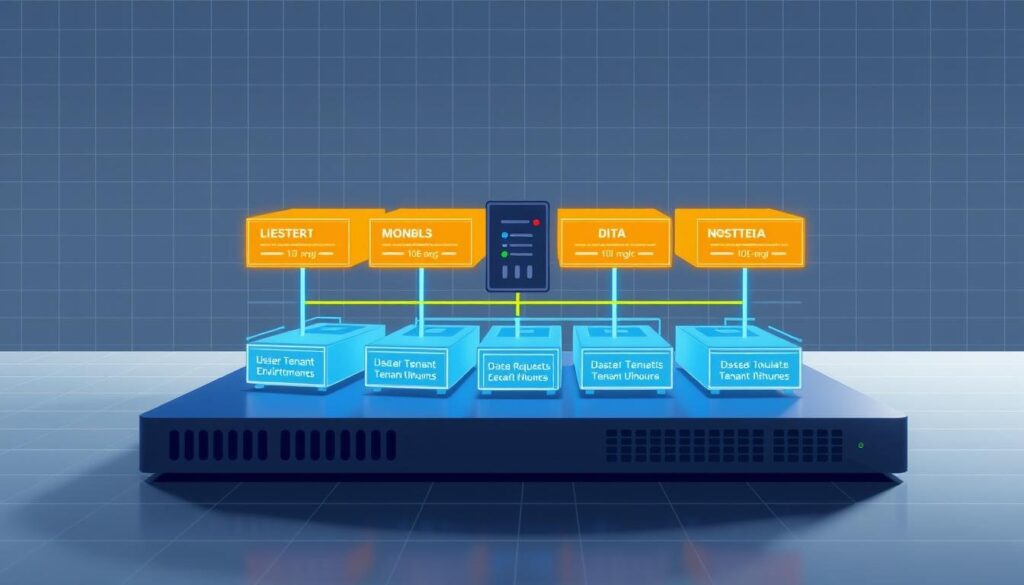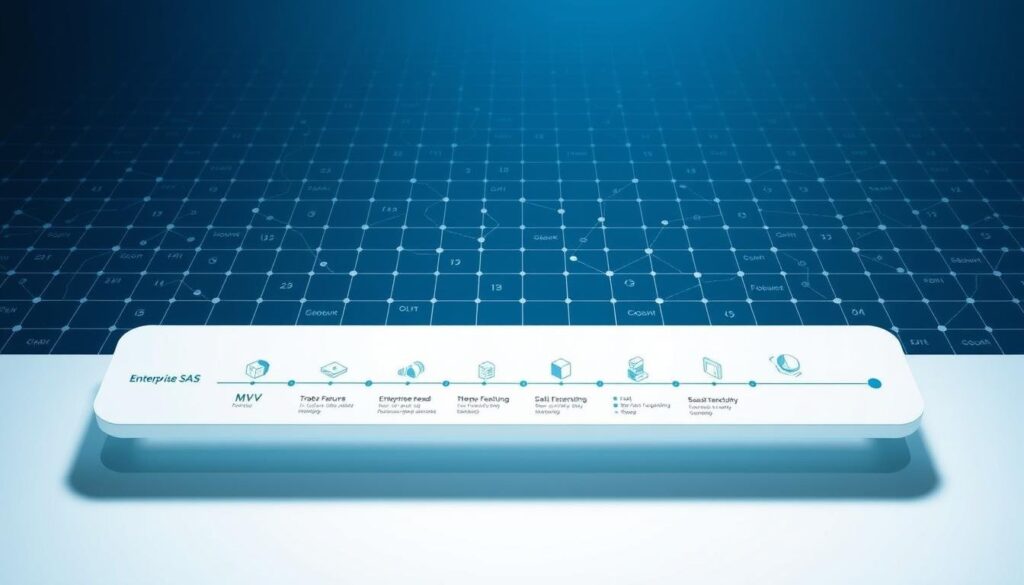What if your online store could anticipate customer needs before they even click? While 43% of business leaders now use intelligent systems to shape strategy, most still limit this technology to basic tasks like crafting product details. The real revolution lies in reimagining every step of the buyer’s journey.

Recent data reveals a striking gap: only 14% of shoppers feel truly satisfied with digital purchases. This dissatisfaction isn’t about products—it’s about experiences. Modern shoppers crave interactions that understand their preferences, adapt in real time, and build genuine connections.
Traditional automation tools analyze existing patterns. The latest innovations create dynamic solutions tailored to individual behaviors. From personalized shopping paths to intelligent fraud detection, these systems transform how brands engage audiences at scale.
Key Takeaways
- 43% of executives now guide business decisions using advanced algorithms
- 86% of consumers report unmet expectations in digital shopping experiences
- Next-gen solutions generate custom content rather than recycling existing data
- 38% of older shoppers remain skeptical about automated systems
- Success requires balancing innovation with transparent data practices
As adoption grows, companies must address trust barriers while delivering value. The most effective strategies combine technical precision with human-centered design—proving that machines and empathy can coexist in commerce.
Introduction to the Evolution of AI in Online Retail
Retailers once relied on basic automation to track inventory or suggest items. Now, intelligent systems craft dynamic solutions that reshape entire buying journeys. This shift mirrors changing consumer demands—73% expect brands to adapt interactions based on their unique preferences.

Understanding Generative AI and Its Rise
Early automation tools analyzed historical patterns to predict outcomes. Modern systems create original content by simulating human-like reasoning. Through neural networks, these solutions weigh inputs like purchase history and browsing behavior to generate tailored suggestions.
A Harvard study found 31% of companies now use this technology in their operations. Another 36% leverage it for marketing—crafting emails that convert 28% faster than generic campaigns. This growth stems from self-improving algorithms that refine outputs through millions of data iterations.
From Traditional AI to Innovative Solutions
Rule-based systems excel at repetitive tasks but struggle with nuance. Next-gen models interpret context, adjusting recommendations based on real-time signals like cart abandonment rates or social media trends. This adaptability drives 42% higher engagement in personalized storefronts.
| Aspect | Traditional Systems | Advanced Models |
|---|---|---|
| Core Function | Pattern recognition | Content creation |
| Learning Method | Static rules | Continuous iteration |
| Output Type | Predictions | Custom experiences |
| Adoption Rate | 58% (2021) | 74% (2024) |
Businesses using these tools report 19% shorter sales cycles. They achieve this by delivering context-aware interactions—like dynamic sizing guides that reduce returns by 37%. The key lies in balancing machine efficiency with human-centric design principles.
Innovative Use Cases Beyond Standard Product Descriptions
Today’s shoppers demand more than static product pages. They seek immersive, tailored experiences that adapt in real time. Leading retailers now leverage advanced systems to build dynamic content ecosystems spanning videos, interactive tools, and personalized marketing materials.

Expanding Beyond Basic Content Creation
Modern tools transform everyday inputs into polished assets. Platforms like Solidgrids enhance casual phone photos into studio-quality product images within seconds. This eliminates costly photo shoots while maintaining brand consistency across all media channels.
Visual discovery tools let customers paste screenshots into search bars to find matching items instantly. Early adopters report 22% higher conversion rates with this approach. It bridges the gap between inspiration and purchase, especially for fashion and home decor retailers.
Automated systems now classify and optimize product details at scale. They ensure sizing charts, material specs, and promotional copy stay accurate across global markets. One outdoor gear brand reduced content errors by 64% using these solutions.
Personalized marketing materials also benefit from intelligent data analysis. Campaigns automatically adjust imagery and messaging based on individual preferences. A skincare company saw 31% higher social media engagement after implementing this strategy.
Interactive experiences push boundaries further. 360-degree product views and virtual try-ons create memorable shopping journeys. These innovations prove that compelling customer interactions drive loyalty as much as the products themselves.
Transforming Online Retail with Generative AI for E-commerce
Imagine a digital assistant that evolves with each customer interaction. Modern systems now interpret browsing patterns, purchase histories, and even conversational cues to deliver hyper-relevant suggestions. These tools don’t just respond to behavior—they anticipate needs through continuous learning.
Smart Guidance for Modern Shoppers
Traditional recommendation engines rely on past purchases. Next-gen solutions analyze real-time signals like cursor movements and wishlist additions. One apparel brand saw 29% higher conversions after implementing dynamic suggestions that update during sessions.
Search functions now understand full sentences instead of keywords. When users type “breathable running shoes for flat feet,” systems match intent with precise inventory. This approach reduces bounce rates by 18% compared to basic keyword matching.
Personal shopping assistants like Kili demonstrate the power of context-aware guidance. These tools ask clarifying questions and refine results based on visual preferences. Home decor retailers using similar solutions report 37% faster checkout times.
Behind the scenes, intelligent systems optimize operations through predictive analytics. They forecast demand spikes by correlating social trends with historical sales data. This enables businesses to adjust pricing and stock levels proactively—reducing excess inventory by up to 24%.
Elevating Customer Experience Through Personalization
Modern shoppers don’t just want products—they crave experiences that feel uniquely theirs. Businesses now combine real-time data analysis with interactive tools to craft journeys that adapt to individual needs. This approach transforms casual browsers into loyal advocates.
Tailored Recommendations Driven by Data Insights
Sophisticated systems analyze dozens of signals—from past purchases to local weather patterns. One outdoor retailer increased conversions by 19% by suggesting rain gear when forecasts predicted storms. “Shoppers respond when suggestions align with their immediate context,” notes a retail tech analyst.
Over 70% of consumers expect brands to remember their preferences across interactions. Platforms now track browsing history across devices, ensuring recommendations stay relevant. This strategy boosts average order values for 98% of adopters while reducing decision fatigue.
Interactive and Immersive Customer Journeys
Virtual assistants now handle 43% of routine inquiries while maintaining conversational flow. These tools recall previous chats, shipping addresses, and even preferred payment methods. Customers spend 28% less time repeating information compared to traditional support channels.
Dynamic product configurators let shoppers visualize items in their space using augmented reality. Furniture sellers using this technology report 31% fewer returns. By blending practical utility with entertainment value, businesses create memorable moments that drive repeat visits.
Streamlining Operations and Order Intelligence
Operational excellence now separates market leaders from competitors. While front-end experiences capture attention, back-end efficiency determines long-term success. Intelligent tools transform supply chains into strategic assets that drive profit margins and customer satisfaction.
Optimizing Inventory Management and Fulfillment
Real-time data analysis prevents costly overstock and stockouts. One footwear brand reduced warehouse costs by 19% using automated restocking triggers. These systems adjust inventory levels based on sales velocity, seasonal trends, and regional preferences.
Dynamic routing algorithms slash delivery times. By analyzing traffic patterns and carrier performance, businesses achieve 27% faster shipments. This precision turns logistical operations into competitive advantages that customers notice.
Predictive Analytics for Demand Forecasting
Historical sales patterns merge with social signals to predict buying surges. A home goods retailer avoided $2.3M in lost sales by anticipating a viral TikTok trend. These insights enable smarter production planning and targeted marketing spend.
Automated pricing strategies respond to market shifts instantly. When competitor prices drop or raw material costs rise, systems adjust rates while protecting margins. This agility helps companies maintain value without sacrificing profitability.





